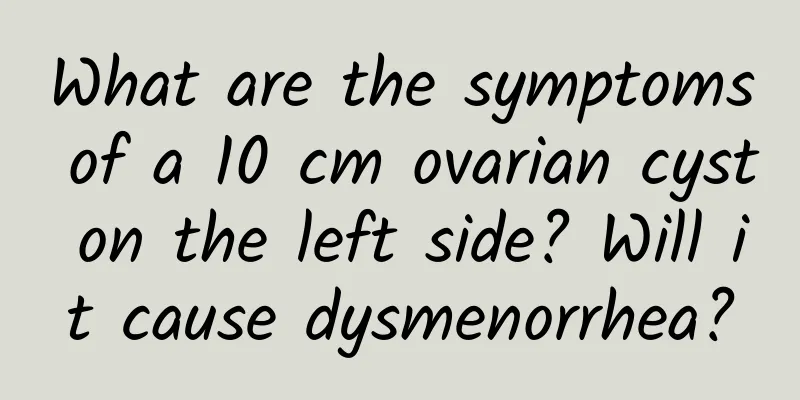The best and fastest treatment for endometrial tuberculosis

|
Endometrial tuberculosis is a common gynecological disease. In daily life, many married women do not pay much attention to personal hygiene in this regard, which can lead to the occurrence of endometrial tuberculosis. In fact, the treatment of endometrial tuberculosis has been studied clinically. So, how to treat endometrial tuberculosis? 1. General treatment Patients with acute endometrial tuberculosis should rest in bed, preferably in a semi-recumbent position, to facilitate the limitation of inflammation and drainage of uterine secretions; hot compresses can be applied to the lower abdomen to promote the absorption of inflammation and relieve pain; bowel movements should be kept open to reduce pelvic congestion and facilitate the excretion of toxins; excessive gynecological examinations should be avoided to prevent the spread of inflammation; physical cooling can be used for high fever; the diet should consist of liquid or semi-liquid, easily digestible foods that are high in calories, protein, and multiple vitamins. Those who cannot eat should receive intravenous nutrition and water supplements, and pay attention to correcting electrolyte imbalances and acidosis. 2. Clear uterine cavity residues and other foreign matter Endometrial tuberculosis after childbirth or abortion, if there is suspected placental tissue residue, should be removed immediately while using antibiotics, but it is better to gently protrude the uterine cavity residue, and try not to perform curettage. Curettage can be performed only when the antibiotics reach a certain dose and the inflammation is under control to prevent the spread of inflammation. If there is active bleeding in the uterus, the uterine cavity can be cleaned with the use of a large amount of antibiotics. For those with contraceptive devices in the uterus, they should also be removed as soon as possible to eliminate the primary lesion and control the spread of inflammation. 3. Uterine dilation and drainage and estrogen therapy For chronic endometrial tuberculosis and senile endometrial tuberculosis, the cervical dilation method can be used to facilitate the drainage of uterine cavity secretions and eliminate the cause. Elderly patients can also use a small amount of estrogen. IV. Intrauterine Drug Administration For married patients, intrauterine medication can be used. Before the operation, the size and position of the uterus should be determined by bimanual examination. After the vulva and vagina are disinfected and the depth of the uterine cavity is detected, a sterile catheter is inserted into the uterine cavity from the cervical os, with a depth less than 0.5 cm. The selected medicine is slowly injected into the uterine cavity through the catheter. After all the medicine has entered the uterine cavity, the catheter is removed, and the patient should lie flat or raise his hips for 1 to 2 hours. This method is repeated once a day and is discontinued during menstruation. Since this method can make the drug act directly on the lesion, it is often effective. 5. Surgical treatment This method is suitable for chronic endometrial tuberculosis caused by submucosal fibroids or polyps. In this case, antibiotic treatment alone is often ineffective, so surgical resection can be considered. The above are our main methods for treating endometrial tuberculosis. Many patients are often at a loss when they encounter endometrial tuberculosis, which delays the best treatment period. This will cause some troubles in our treatment. |
<<: Misunderstandings in the treatment of endometrial tuberculosis
>>: What is the most effective treatment for endometrial tuberculosis?
Recommend
Polycystic ovary disease makes people fat! Yoga can help you turn your life around
Your period is always late and you are getting fa...
What if my period stops after one day?
Why does my period stop after one day? If menstru...
There is a magic tool to burn fat and suppress hunger! Drink these 5 kinds of tea to make you lighter
If you don’t drink coffee, what do you usually dr...
Who are the high-risk groups for ovarian tumors?
Knowing the high-risk groups for ovarian tumors w...
What are the causes of dysmenorrhea in young girls?
Nowadays, many girls experience pain during menst...
Vulvar leukoplakia is effectively treated by both internal and external treatment
Vulvar leukoplakia belongs to the category of &qu...
In the late pregnancy, I feel like I have dysmenorrhea and I often have diarrhea.
In late pregnancy, the feeling of dysmenorrhea an...
Neglecting confinement can lead to obesity, back pain! Chinese medicine doctor Wu Mingzhu: 4 must-drink teas to help lose weight after childbirth
Confinement period is an opportunity for postpart...
Amazing zombie gymnastics! Just one move, no more shoulder and neck pain
No time to exercise? It hurts here and there, and...
What are the main symptoms that cause dysmenorrhea?
Among gynecological diseases, dysmenorrhea is the...
Why does pelvic inflammatory disease affect fertility?
What are the hazards of pelvic inflammatory disea...
What are the nursing methods for dysmenorrhea
As a woman, are you troubled by these situations:...
Cervical precancerous lesions of grade 3 are very serious
Analyzing the hazards of cervical precancerous le...
To prevent premature ovarian failure, do these five things
The ovaries are the organs that produce eggs in w...
What tests are done for pelvic peritonitis
Tenderness and rebound tenderness are the main si...









